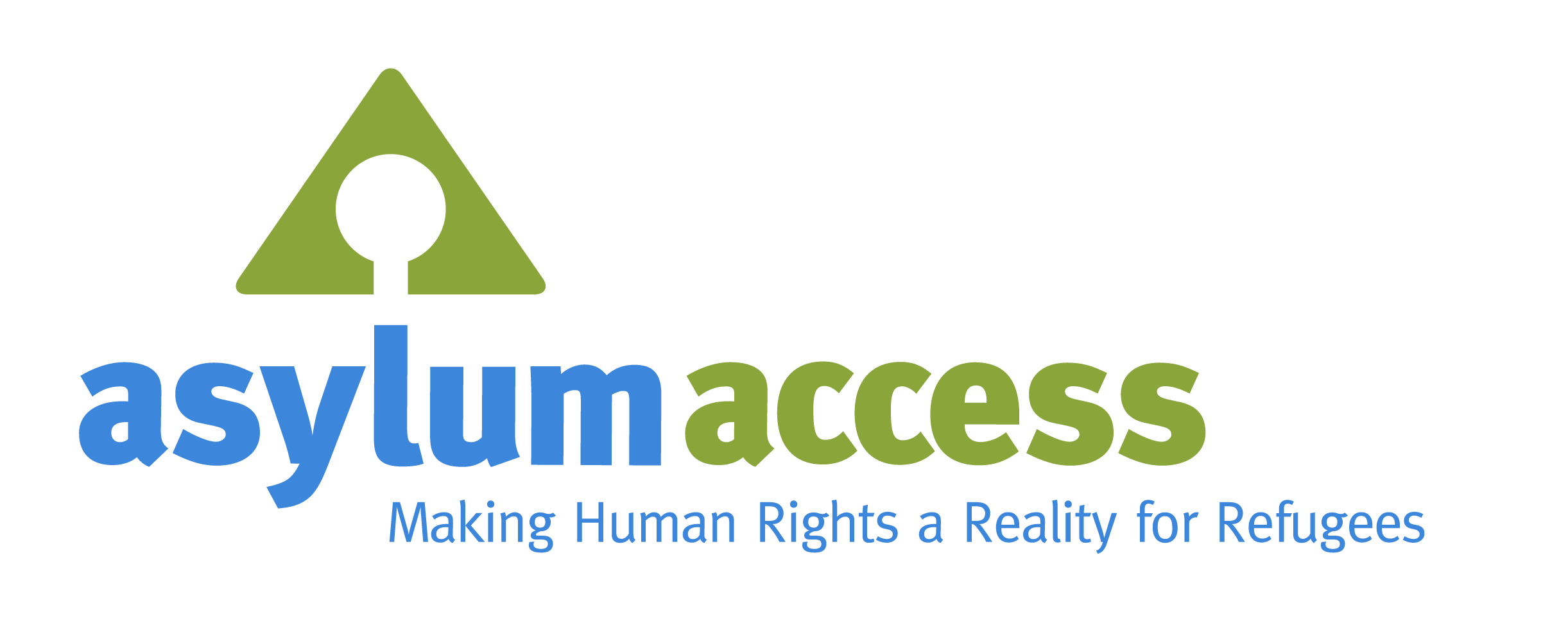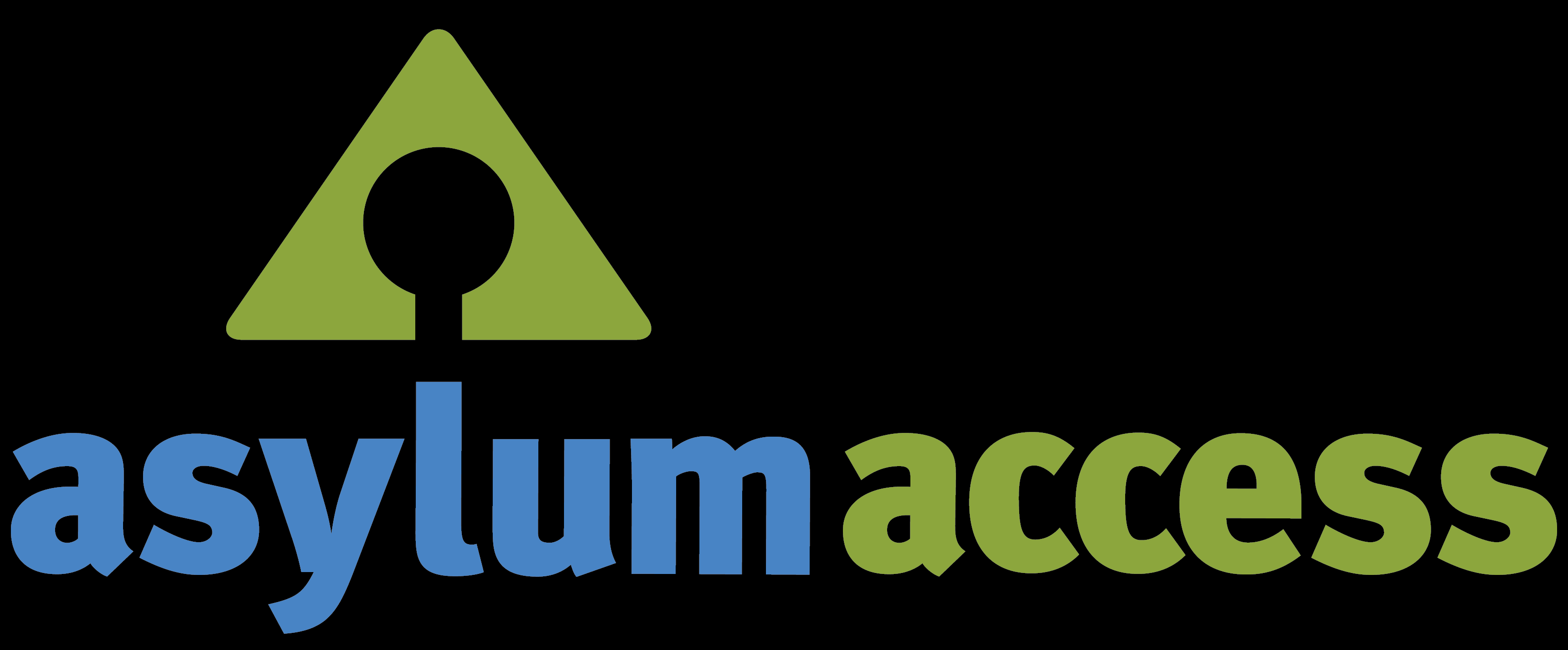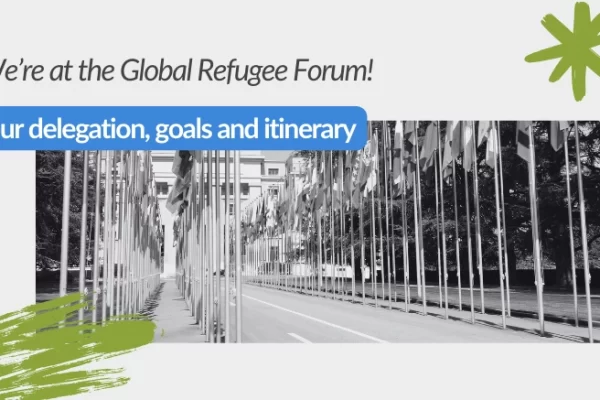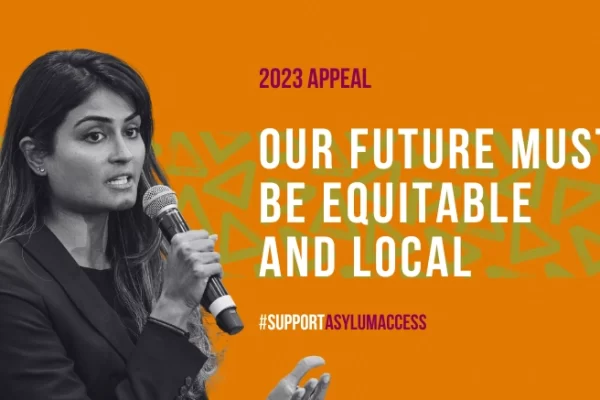A Journey to the Frontlines of Refugee Rights Assistance
Notes from a visit to our offices in border towns and cities across Ecuador.
One year after Asylum Access Ecuador opened five new offices around the country, I visited to observe their progress.
It’s a special experience to visit any of our frontline operations. The heart and soul of our work — helping a refugee woman stand up for fair wages, counseling a family about their rights and options to build a new life, helping a young man obtain refugee status after he’s fled death threats — is here. Our legal advocates save lives. They provide a sympathetic ear, a friendly face. They open doors to a new life. They transform childhood from one of endless poverty to one of boundless opportunity.
Guayaquil: Home to the Invisibles
I began my journey in Guayaquil, Ecuador’s largest city and one where many refugees have lived invisibly for years. Because few services have existed for refugees here, those who arrived fleeing violence or persecution didn’t seek asylum. Often, they didn’t know they could.
Instead, refugees have built homes on vacant lots. They work as day laborers, lingering on a street corner known for cheap construction labor. Lacking any legal status, they avoid contact with government authorities. One man I met was riding his friend’s motorbike when the police stopped him. “This bike isn’t registered,” they told him. It was, but the police threatened to confiscate the bike unless he paid them $100. “They knew I was Colombian, a refugee,” the man said. “I couldn’t do anything, so I paid.”
The rights violations in Guayaquil and surrounding areas are endemic. Gradually, however, Asylum Access Ecuador’s Guayaquil office is making inroads.
“We found a squatter’s area where many refugees lived. They have no running water, no electricity. The road washes out in the rainy season, so we have to walk in,” our staff told me. When they met their first client in the area, they were muddy up to their knees from the hike. Undaunted, they explained to the man that as someone who fled Colombia in fear for his life, he was entitled to legal status as a refugee. They listened to his story and helped prepare his application for refugee status, walking back time and again along the muddy road to meet with him. When his application was accepted, the whole office celebrated. Now the man, and other neighbors who’ve received assistance from Asylum Access, can begin to regularize their housing and access state-provided services.
Quito: A Donor Family Visits
A few days later, I landed in Quito, where Asylum Access supporters Scott and Karen Green and their three children joined us. On the first day of a year-long, around-the-world trip, the Green family stopped by our office in Quito to hear from several Asylum Access Ecuador clients.
One woman, a journalist who was forced to flee after death threats from paramilitary forces, talked about changing her appearance to prevent her persecutors from finding her. Her 11-year-old daughter spoke too, about the bullying she faces because she’s a refugee: “The other kids pull my hair and call me names. The teachers don’t do anything. One teacher, she tried to fail me because she doesn’t like me, because I’m Colombian. But I did so well that in the end, she had to pass me.”


The Asylum Access staff talk about xenophobic bullying. It’s an increasing problem for our clients. We’ve used our women’s groups to help women stand up to gender-based violence and harassment; maybe we can do the same with youth, they propose. Scott and his family listen intently, working their way through some of the Spanish, waiting patiently for translations when the words are too rapid or too complex to understand.
Perhaps the most telling testament to Asylum Access’s assistance comes from the theme that continually arises: “Asylum Access is like my family.” Refugees note that we don’t employ a door guard, as other agencies do. Instead of getting interrogated on the street, they simply announce themselves on an intercom and are buzzed in. When they reach our office, they’re greeted with “How can I help you?” rather than “What do you want?” These little things, they say, differentiate Asylum Access from other refugee-serving organizations.
But the difference goes further. Asylum Access doesn’t just “sigh and give him a handout”, a refugee says. His brother was killed back in Colombia, a fact he mentions briefly and matter-of-factly, as if it’s a common experience. (In his world, it is.) Asylum Access gives hope, helps refugees see a way forward, helps them stand up to employers who cheat them, to police who ignore or harass them. No one says much directly about our legal assistance; instead they talk about the impact of the legal tools we use. There’s a sense that we’re in this together: The rights violations are constant, but we and our refugee clients are part of a team working to end them.
San Lorenzo: Walking the Barrios
A few days later, I travel to San Lorenzo, a border town on a mangrove estuary. Across the water, a few yards away, we can see Colombia. Down below the pier, small boats dock at the bottom of a staircase; immigration officials standing at the top check passports. Many of our refugee clients arrive this way. They have 15 days to apply for refugee status.
We start the day walking through neighborhoods on the edge of the mangrove forest, where houses are built on stilts and residents use small boats to catch fish and crabs. Our first stop is a two-story building made of plywood and corrugated metal. It looks as though a strong wind would demolish it. The second floor is divided into small cubicles, each with a plywood door and padlock, like a storage shed.


We knock on the first door and meet a refugee woman and her two children. They sit with us on a wooden bench on a balcony overlooking the street that offers a small relief from the humid heat. I hold the woman’s baby as Vilma, our San Lorenzo coordinator, urges the woman to seek refugee status before her 15 days are up. “We can help you,” she says. “Our office is just above the Directorate of Refugees. I’m there every day — come and see us tomorrow or later this week. It’s very important that you come before 15 days have passed.”
To me, the woman seems overwhelmed. Only a few days ago, she fled her home, fearing for her life. She’s trying to bury her grief, move forward in the midst of crippling fear, keep life normal for her children when nothing is normal anymore.
Or so I imagine. She doesn’t open her feelings to us, these strangers who are telling her about one more thing she has to do, one more obstacle she must overcome. She tells us just a few of the facts, enough for me to realize there’s much more under the surface. She clearly meets the legal requirements for refugee status. I wonder if she’ll apply within her 15 days, if she’ll come to our office for help.
If she doesn’t come this week, I know there will be dozens, maybe hundreds, of others who do. The need is far greater than our capacity, in this, our newest of offices.
Epiphany and Inspiration: Getting To Know Our Team
As we continue traveling through San Lorenzo’s barrios, I’m impressed by Vilma’s easy blend of authoritative provision of information and casual confidence in connecting on a personal level with refugees. She’s young, but she knows her field and her strategy, and it shows.
Then Vilma makes a comment about her “carnet”, or asylum-seeker card. The shoe drops: Vilma herself is a refugee, currently awaiting a decision on her status. She tells me she’s been waiting for over a year for a decision on her application. Again, a few facts, just enough for me to realize there’s much more under the surface. I marvel anew at her expertise and confidence. Vilma’s professionalism, I realize, is layered atop experiences of tragedy and perseverance unlike anything I’ve lived.
Back in Quito a few days later, I get to spend time with our entire Ecuador team from across the country, in town for an annual training. Several others are refugees like Vilma, although all except Vilma already have received legal status.
Watching the Asylum Access Ecuador team interact, asking questions, sharing strategies, bonding over the challenges of our work, a newcomer wouldn’t know which staff members are refugees and which Ecuadorians. In the midst of all the complexity and heartbreak and triumph in our daily work on the front lines of refugee rights advocacy, this final experience epitomizes for me the greatest hope of the refugee rights movement: That one day, not only in our offices but across our world, we’ll be unable to tell the difference between refugees and locals. We’ll only see people working together for a better future.
By Executive Director Emily Arnold-Fernández





